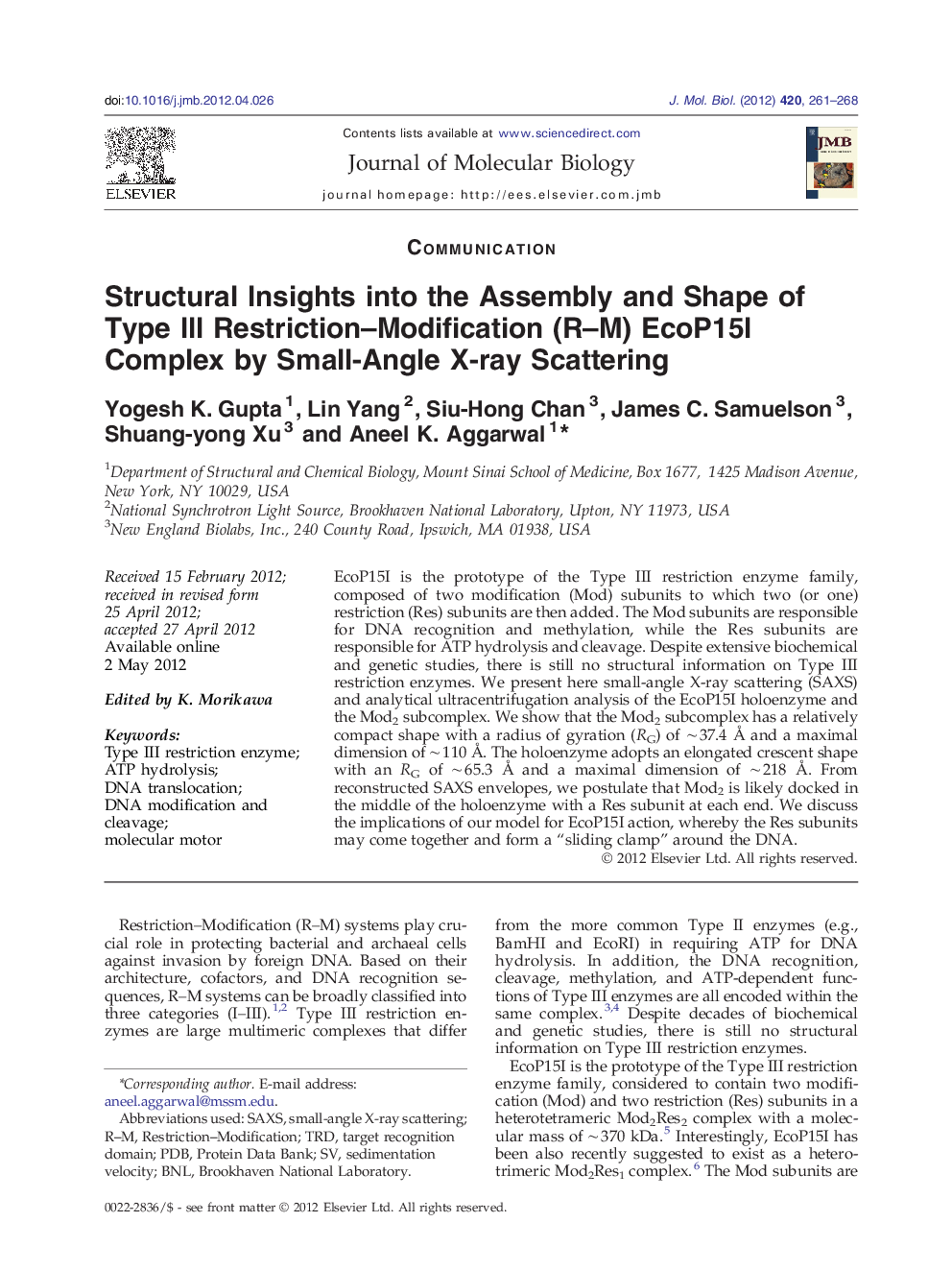| Article ID | Journal | Published Year | Pages | File Type |
|---|---|---|---|---|
| 2184735 | Journal of Molecular Biology | 2012 | 8 Pages |
EcoP15I is the prototype of the Type III restriction enzyme family, composed of two modification (Mod) subunits to which two (or one) restriction (Res) subunits are then added. The Mod subunits are responsible for DNA recognition and methylation, while the Res subunits are responsible for ATP hydrolysis and cleavage. Despite extensive biochemical and genetic studies, there is still no structural information on Type III restriction enzymes. We present here small-angle X-ray scattering (SAXS) and analytical ultracentrifugation analysis of the EcoP15I holoenzyme and the Mod2 subcomplex. We show that the Mod2 subcomplex has a relatively compact shape with a radius of gyration (RG) of ∼ 37.4 Å and a maximal dimension of ∼ 110 Å. The holoenzyme adopts an elongated crescent shape with an RG of ∼ 65.3 Å and a maximal dimension of ∼ 218 Å. From reconstructed SAXS envelopes, we postulate that Mod2 is likely docked in the middle of the holoenzyme with a Res subunit at each end. We discuss the implications of our model for EcoP15I action, whereby the Res subunits may come together and form a “sliding clamp” around the DNA.
Graphical AbstractFigure optionsDownload full-size imageDownload high-quality image (167 K)Download as PowerPoint slideHighlights► First SAXS analysis of a Type III restriction enzyme. ► First low-resolution model for a Type III restriction enzyme. ► Type III restriction enzymes adopt an elongated crescent shape. ► Type III enzymes may form a “sliding clamp” around the DNA.
